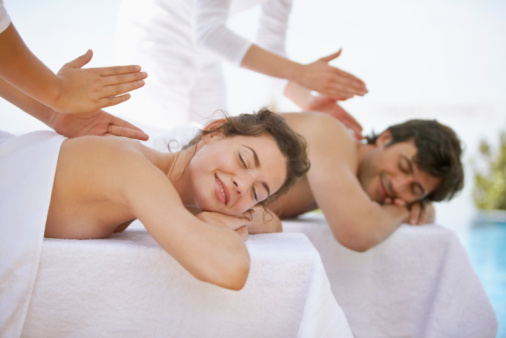
ABMP members practice more than 350 modalities of massage and bodywork. How do we keep track of them all? The Glossary of Massage and Bodywork Techniques on our client-education site Massagetherapy.com, where we list and define all types of massage and bodywork.
You can see the glossary at www.massagetherapy.com/glossary/index.php.
Here are a few highlights:
Aston-Patterning: Aston-Patterning is an educational process developed by Judith Aston in 1977 that combines movement coaching, bodywork, ergonomics, and fitness training. It can be helpful to individuals seeking relief from acute or chronic pain or for those wishing to improve their posture and increase the efficiency of their movement patterns, either in activities of daily living or complex activities, such as athletics or the performing arts. The movement work, neurokinetics, has two divisions.
Deep-Tissue Massage: Techniques that utilize deep-tissue/deep-muscle massage are administered to affect the sub-layer of musculature and fascia. These techniques require advanced training and a thorough understanding of anatomy and physiology. The muscles must be relaxed in order to effectively perform deep-tissue massage; otherwise, tight surface muscles prevent the practitioner from reaching deeper musculature. It helps with chronic muscular pain and injury rehabilitation, and reduces inflammation-related pain caused by arthritis and tendinitis.
Lomilomi: This system of massage utilizes very large, broad movements. Two-handed, forearm, and elbow application of strokes, which cover a broad area, are characteristic of lomilomi. Although it is similar to Swedish massage in many aspects, this system uses prayer and the acknowledgment of the existence of a higher power as an integral part of the technique. Lomilomi—Hawaiian for “rub rub”—is described by teacher Aunty Margaret Machado as the loving touch: a connection between heart, hand, and soul with the source of all life.
Rolfing Structural Integration: A method to reorder the major body segments, Rolfing was founded by American biochemist Ida P. Rolf, PhD, in the 1940s. Rolfing utilizes physical manipulation and movement awareness to bring head, shoulders, thorax, pelvis, and legs into vertical alignment. It allows more efficient use of the muscles with less expended energy by lifting the head and chest and lengthening the body’s trunk. A sense of lightness and greater mobility often result from Rolfing. Treatments are offered in a 10-session series, as well as advanced sessions.
Tui Na: Tui na is an ancient Chinese system of manual therapeutics with a wide range of techniques and indications. While traditional Chinese medical precepts form its theoretical basis, clinical experience governs its application. Tui na techniques range from light and soothing to strong and invigorating. Refined over the centuries, tui na facilitates healing by regulating the circulation of blood and qi (vital energy), which controls body function and enhances resistance to disease.
Did you know? Massagetherapy.com gets more than 1 million visits each year. If you’re an ABMP member, make sure your customized listing is filled out and ready to meet potential clients—update it at www.abmp.com/members/marketing-center/client-education-tools/referral-listing.